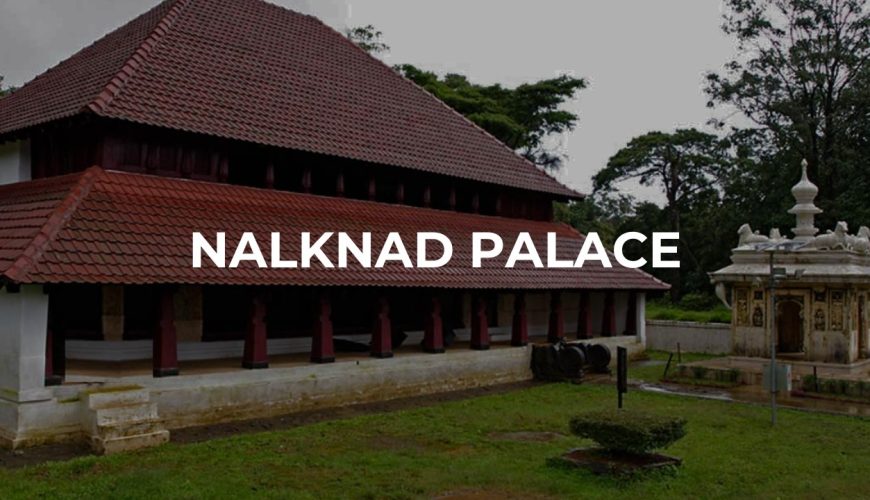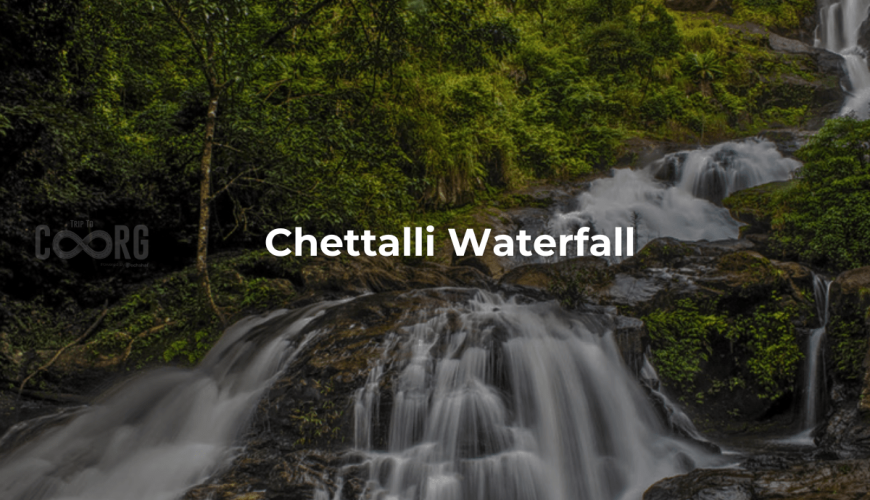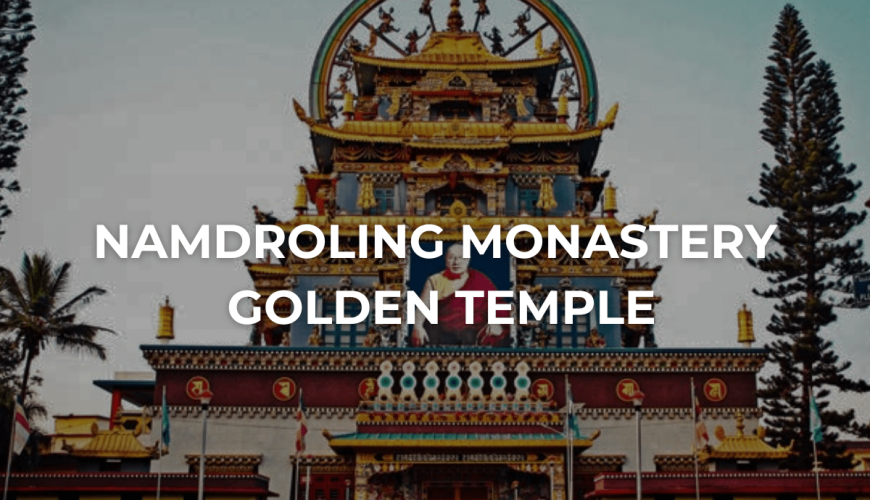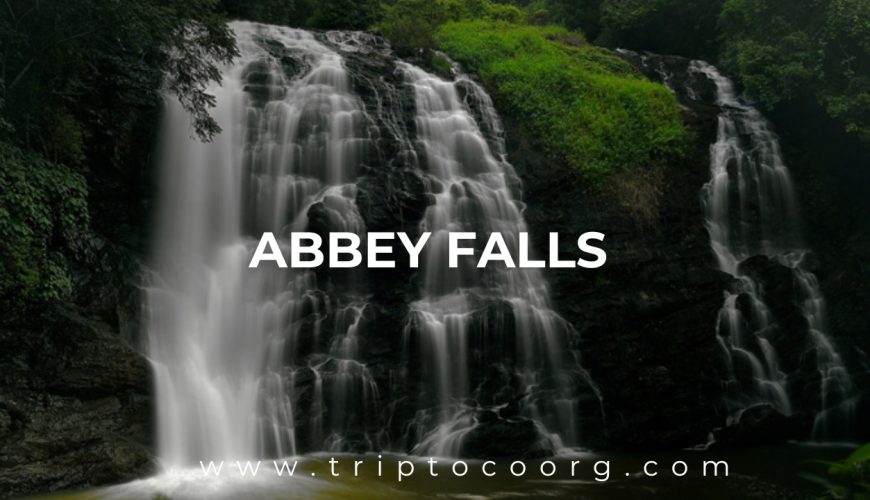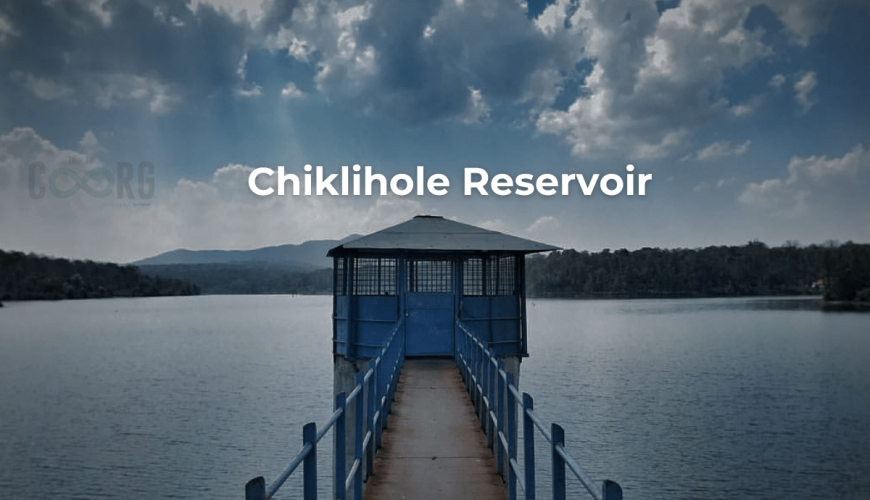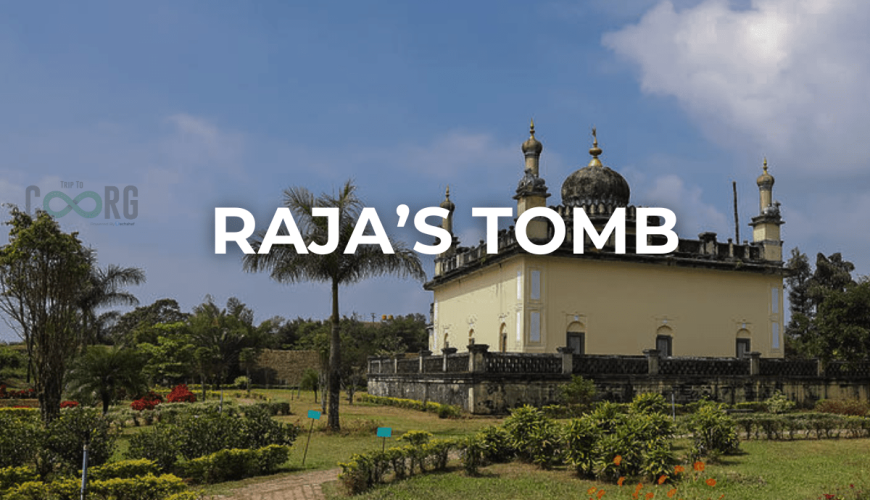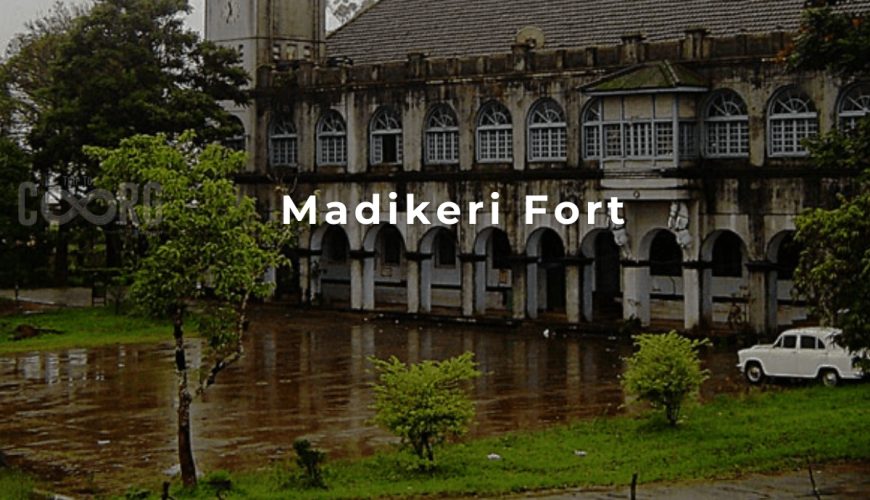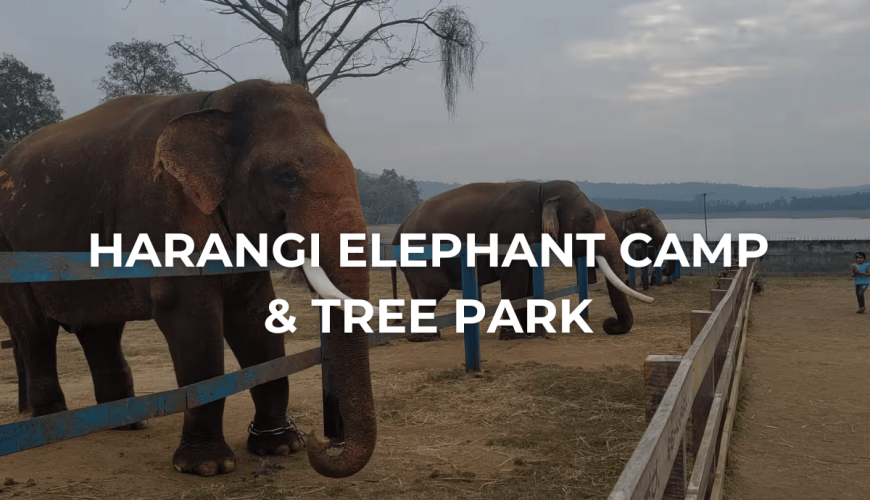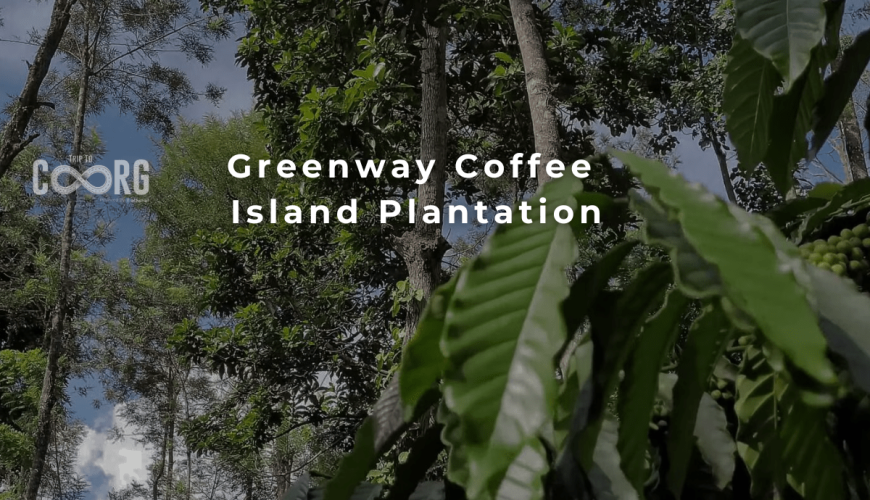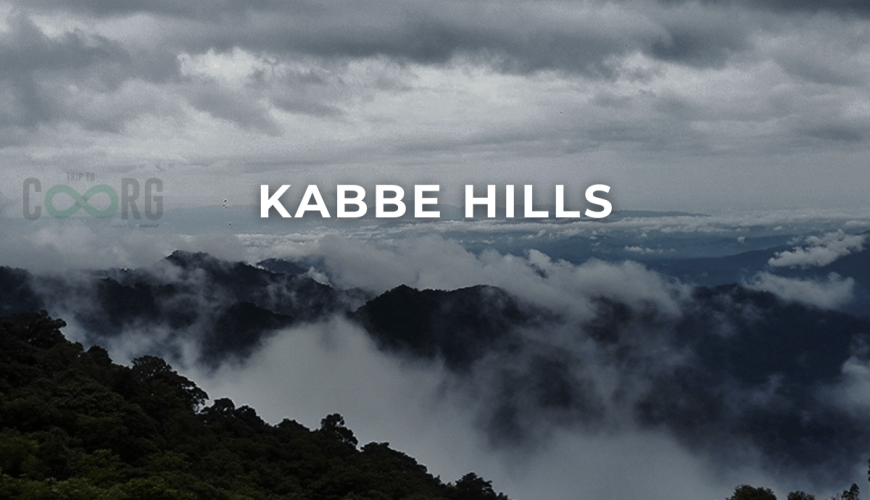Nalknad Palace (A Glimpse into Coorg’s Regal Heritage)
Introduction: Nalknad Palace, also known as the Nalknad Aramane, is a historic palace situated in the Coorg (Kodagu) district of Karnataka, India. Nestled amidst the verdant hills and lush landscapes of Coorg (Kodagu) in Karnataka, the Nalknad Palace is a historical gem that offers a captivating glimpse into the region’s royal past. Located in the village of Nalknad, about 30 kilometres from Madikeri, this palace stands as a testament to the architectural and cultural heritage of the Kodava dynasty. This 18th-century royal residence offers a unique insight into the region’s architectural and cultural heritage. Built by Chikka Virarajendra, the last ruler of the Kodagu dynasty, the palace reflects the grandeur of Coorg’s royal history and serves as a significant cultural landmark. Nalknad Palace was built in 1792 by the then Kodava chieftain, Doddavira Rajendra, and later expanded by his descendants. The palace served as a summer retreat for the Kodava kings, providing them with a serene environment away from the administrative duties and heat of the main town, Madikeri. The palace holds historical importance as a residence of the Kodava rulers and as a site of significant events in the region’s history. The palace exhibits traditional Kodava architecture, characterised by its distinctive style and materials. Built primarily from wood and laterite stone, the structure features sloping roofs with tile cover, wide verandas, and intricate wooden carvings. The architectural style reflects the local building traditions and climate considerations. The interior of Nalknad Palace is adorned with elegant wooden panelling and traditional Kodava motifs. The spacious halls and rooms, though simple, provide a glimpse into the lifestyle of the Kodava royalty. The palace’s design includes features like high ceilings, large windows, and verandas that facilitate natural ventilation and cooling. The palace is decorated with traditional Kodava art and craftsmanship. The wooden carvings and embellishments on the doors and windows are notable for their intricate designs, showcasing the skill of local artisans. Efforts are made to preserve and maintain Nalknad Palace, ensuring that it remains a valuable part of Coorg’s heritage. Conservation initiatives focus on protecting the structure from environmental damage and preserving its historical and architectural integrity. Visitors are encouraged to respect the site and follow any guidelines to help in its preservation. Distance: From Bangalore to Nalknad Palace in Coorg (Kodagu) is approximately 250 to 275 kilometres (about 155 to 171 miles). The journey typically takes around 5 to 6 hours. From Mangalore to Nalknad Palace in Coorg (Kodagu) is approximately 130 to 150 kilometres (about 81 to 93 miles). The journey typically takes around 3 to 4 hours. From Mysore to Nalknad Palace in Coorg (Kodagu) is approximately 115 to 130 kilometres (about 71 to 81 miles). The journey typically takes around 3 to 4 hours Nalknad Palace is famous for its historical significance, architectural style, and scenic location. Key aspects of its fame include: 1. Historical Significance:Built in the 18th century by Chikka Virarajendra, the last ruler of the Kodagu dynasty, the palace is an important symbol of Coorg’s royal heritage. It served as a retreat for the royal family and played a role in the region’s history. 2. Architectural Beauty: The palace features traditional Kodagu architecture with a unique blend of Indian and colonial styles. Its design includes intricately carved wooden panels, elegant arches, and spacious courtyards. The architectural style reflects the royal grandeur and craftsmanship of the time. 3.Cultural Heritage: Nalknad Palace is an integral part of Coorg’s cultural heritage, offering visitors a glimpse into the lifestyle and history of the Kodagu royal family. The palace’s historical significance and architectural features make it a valuable cultural landmark. 4.Scenic Location: Set amidst lush greenery and rolling hills, the palace offers a serene and picturesque setting. The natural beauty surrounding the palace enhances its historical charm and provides a tranquil environment for visitors. 5.Preserved Artefacts: The palace houses several artefacts, including old photographs, royal portraits, and traditional furnishings, which provide further insights into the royal lifestyle and history of the Kodagu dynasty. The ideal time to visit Nalknad Palace is between October and March when the weather is pleasant and suitable for outdoor exploration. The cooler months provide a comfortable environment for sightseeing and enjoying the natural beauty of Coorg. Visitors should be respectful of the palace’s historical and cultural significance. Photography may be restricted in certain areas, so it’s advisable to check with the local staff or guides before taking pictures. Modest attire is recommended when visiting historical sites. Conclusion: Nalknad Palace stands as a remarkable testament to the regal heritage of Coorg. Its traditional architecture, historical significance, and serene surroundings offer a unique glimpse into the life and times of the Kodava royalty. A visit to Nalknad Palace provides an enriching experience, highlighting the architectural and cultural richness of Coorg and offering a peaceful retreat into the region’s illustrious past.
Chettalli Waterfall (A Hidden Gem of Coorg)
Introduction: Chettalli Waterfall is a serene and picturesque waterfall located in the Coorg (Kodagu) district of Karnataka, India. Chettalli Waterfall is a serene and relatively known for its natural beauty and tranquil setting, this waterfall is a lesser-known but captivating destination for nature enthusiasts and travellers seeking a peaceful retreat, visitors with its tranquil beauty and lush surroundings. The cascading waters and lush surroundings create a soothing atmosphere that attracts visitors looking to experience the serene beauty of Coorg. Located near the small village of Chettalli, about 40 kilometres from Madikeri, this waterfall is a hidden gem that offers a peaceful retreat into nature. The waterfall is nestled amidst dense forests and coffee plantations, adding to its scenic charm. Its remote location offers a serene escape from the more frequented tourist spots in Coorg. Chettalli Waterfall is a charming cascade that flows gently over a rocky outcrop, creating a soothing and picturesque setting. Unlike some of the more popular waterfalls in Coorg, Chettalli Waterfall remains relatively off the beaten path, making it an ideal destination for those seeking solitude and a connection with nature. The serene environment around Chettalli Waterfall makes it a great spot for a picnic. Visitors can relax by the waterfall, enjoy a meal amidst nature, and take in the peaceful ambiance. The picturesque setting of the waterfall, with its gentle cascade and lush surroundings, offers ample opportunities for photography. Capturing the beauty of the waterfall and the surrounding landscape can be a rewarding experience. Exploring the area around Chettalli Waterfall provides a chance to experience the local flora and fauna. Nature walks through the surrounding forest offer a deeper connection with Coorg’s natural environment. The tranquil atmosphere of Chettalli Waterfall makes it an ideal place to unwind and escape the hustle and bustle of city life. Spending time by the waterfall can be a soothing experience, allowing visitors to relax and rejuvenate. Distance: From Bangalore: Chettalli Waterfall is about 270 kilometres from Bangalore, taking around 6-7 hours by road. From Mangalore: It is approximately 160 kilometres away from Mangalore, with a driving time of about 4-5 hours. The distance from Mysore to Chettalli Waterfall in Coorg is approximately 100 to 115 kilometres (about 62 to 71 miles). The journey typically takes around 2.5 to 3.5 hours. Chettalli Waterfall is famous for its natural beauty, tranquil environment, and off-the-beaten-path appeal. Key aspects of its fame include: 1. Scenic Beauty: The waterfall is surrounded by lush greenery, dense forests, and rolling hills, creating a picturesque setting. The cascading waters, combined with the serene environment, make it a visually stunning destination for nature lovers and photographers. 2. Tranquil Setting: Unlike more crowded waterfalls in the region, Chettalli Waterfall offers a peaceful and less-commercialised experience. The secluded location provides a sense of tranquillity and relaxation, making it an ideal spot for those seeking a quiet retreat. 3.Natural Beauty: The waterfall is set amidst coffee plantations and verdant landscapes, adding to its natural charm. The clear waters cascading down the rocks create a refreshing and soothing ambiance that enhances the overall experience. 4. Exploration and Trekking: The area around Chettalli Waterfall offers opportunities for exploration and light trekking. Visitors can enjoy leisurely walks through the surrounding forests and coffee estates, discovering the region’s natural beauty and biodiversity. 5. Local Experience: Visiting Chettalli Waterfall provides an opportunity to experience the local lifestyle and rural charm of Coorg. The nearby village of Chettalli adds a cultural dimension to the visit, allowing travellers to immerse themselves in the local environment. The ideal time to visit Chettalli Waterfall is from October to March, when the weather is pleasant and conducive to outdoor activities. During the monsoon season (June to September), the waterfall is more robust, but the rains can make travel conditions challenging. Visitors are encouraged to respect the natural environment and follow any local guidelines. It is important to avoid littering and to ensure that the area remains clean and pristine for future visitors. Exercise caution near the water’s edge, especially if visiting during the monsoon season when the water flow can be stronger. Ensure that children are supervised and avoid venturing too close to the waterfall. Conclusion: Chettalli Waterfall is a hidden gem in Coorg, offering a serene and picturesque escape into nature. With its stunning scenery, tranquil environment, and off-the-beaten-path appeal, it provides a refreshing experience for those seeking to connect with Coorg’s natural beauty. Whether for relaxation, exploration, or simply enjoying the peaceful surroundings, Chettalli Waterfall is a worthwhile destination for nature enthusiasts and travellers.
Namdroling Monastery, Golden Temple (A Beacon of Tibetan Culture in Coorg)
Introduction: Nestled in the lush hills of Coorg, Karnataka, the Namdrolling Monastery, also known as the Golden Temple, is a prominent Tibetan Buddhist Monastery located in Bylakuppe, Karnataka, India, stands as a vibrant testament to Tibetan Buddhism and culture. this monastery is a significant center for the Nyingma tradition of Tibetan Buddhism and offers a unique cultural and spiritual experience for visitors. Established in 1963 by the 16th Karmapa, Rangjung Rigpe Dorje, and later expanded under the guidance of the prominent Tibetan Lama, His Holiness Pema Norbu Rinpoche, it is one of the largest Tibetan Buddhist monasteries in India and serves as a key center for the Nyingma tradition of Tibetan Buddhism. Namdroling Monastery, also known as the Golden Temple, is located in the village of Bylakuppe, approximately 30 kilometers from the town of Madikeri, the monastery is a beacon of Tibetan culture and spirituality.It is one of the largest Tibetan Buddhist monasteries in the world and is home to over 5,000 monks and nuns. The monastery complex is known for its stunning architecture, vibrant murals, and large golden statues of Buddha, Guru Padmasambhava, and Amitayus. It’s a popular destination for both tourists and devotees, offering a serene and spiritual environment. The monastery also serves as an important center for Buddhist teachings and practices, hosting numerous festivals and ceremonies throughout the year. The Namdrolling Monastery is an architectural marvel, characterized by its traditional Tibetan design. The monastery features a large prayer hall (Assembly Hall) adorned with vivid murals, ornate statues, and golden decorations. The striking red, gold, and white color scheme of the building is typical of Tibetan monastic architecture and creates a visually captivating experience. The centerpiece of the monastery is its main shrine, which houses three magnificent statues of the Buddha: Buddha Shakyamuni, Guru Padmasambhava (Padmasambhava), and Amitayus. These statues are meticulously crafted and covered in gold leaf, and they embody the essence of Tibetan Buddhist teachings. The walls of the monastery are adorned with intricate murals depicting various aspects of Tibetan Buddhist cosmology, including deities, mandalas, and scenes from Buddhist scripture. These murals are not only visually stunning but also serve as important teaching tools for visitors and practitioners. The monastery complex includes several other important structures, such as the monks’ quarters, meditation halls, and a library. The serene courtyards and gardens surrounding the monastery enhance the peaceful ambiance of the area. Distance: From Bangalore: The distance is about 230 kilometers (143 miles) and takes around 5 to 6 hours by road, depending on traffic and road conditions. From Mysore: The distance is approximately 90 kilometers (56 miles) and usually takes about 2 to 2.5 hours by road. From Kushalnagar: Namdroling Monastery is located just about 6 kilometers (3.7 miles) from Kushalnagar, and the drive takes around 10 to 15 minutes. Namdroling Monastery, also known as the Golden Temple, is famous for several reasons: Architectural Splendor: The monastery is renowned for its stunning Tibetan architecture, intricate murals, and vibrant frescoes that depict scenes from Tibetan Buddhist mythology. The main prayer hall houses towering golden statues of Buddha Shakyamuni, Guru Padmasambhava, and Amitayus, which are breathtaking and visually striking. Cultural and Spiritual Hub: It serves as a major center for the preservation and propagation of Tibetan Buddhism and culture outside of Tibet. The monastery is an important educational institution where monks and nuns undergo rigorous training in Buddhist philosophy, rituals, and practices. Serene Atmosphere: The peaceful and spiritual environment of the monastery attracts visitors seeking tranquility and a place to meditate or simply enjoy the calm ambiance. The monastery’s beautifully maintained gardens and prayer halls provide a serene setting that appeals to both devotees and tourists. Festivals and Ceremonies: Namdroling Monastery hosts several significant Tibetan Buddhist festivals, such as Losar (Tibetan New Year) and the annual Tibetan prayer festival (Monlam Chenmo). These events are marked by vibrant rituals, traditional music, and masked dances, drawing visitors from around the world.Situated in Bylakuppe, one of the largest Tibetan settlements in India, the monastery is part of a broader cultural experience where visitors can explore Tibetan markets, enjoy Tibetan cuisine, and witness the daily life of the Tibetan community. Spiritual Leadership: The monastery was founded by His Holiness Pema Norbu Rinpoche, a highly respected Tibetan spiritual leader, and continues to be a significant center for the Nyingma tradition of Tibetan Buddhism. When visiting Namdroling Monastery, also known as the Golden Temple, there are several activities and experiences to make the most of your visit: Explore the Prayer Halls:Main Prayer Hall: Admire the impressive golden statues of Buddha Shakyamuni, Guru Padmasambhava, and Amitayus. The hall is adorned with beautiful murals and intricate Tibetan artwork. Participate in Prayer and Meditation:Chanting and Prayers: Visitors can join in the daily prayers and chanting sessions if they wish, or simply observe the monks as they engage in their spiritual practices. Visit the Tibetan Bazaar:Souvenirs and Crafts: Explore the nearby Tibetan bazaar, where you can purchase traditional Tibetan items such as prayer flags, thangkas (paintings), handicrafts, and souvenirs. Attend Festivals and Events:Special Occasions: If you visit during one of the monastery’s festivals or special events, such as Losar (Tibetan New Year) or Monlam Chenmo (Great Prayer Festival), you can witness vibrant rituals, traditional dances, and cultural celebrations. Learn About Tibetan Buddhism:Informational Material: Look for brochures or informational material available at the monastery to learn more about Tibetan Buddhism, the monastery’s history, and its significance. Photography:Capturing Beauty: Take photographs of the stunning architecture, golden statues, and picturesque surroundings. Be respectful of areas where photography might be restricted. The ideal time to visit Namdrolling Monastery is from October to March when the weather is pleasant and conducive to travel. The cooler months provide a comfortable environment for exploring the monastery and participating in outdoor activities. Modest clothing is recommended when visiting the monastery. While there is no strict dress code, visitors should ensure that their attire is respectful of the religious setting. Comfortable shoes are also advisable, as there is some walking involved
Abbey Falls
Introduction: Abbey Falls, also known as Abbi Falls, is a picturesque waterfall located near Madikeri in the Kodagu (Coorg) district of Karnataka, India. Nestled amidst the lush greenery of the Western Ghats, the waterfall is one of the most popular tourist attractions in Coorg.Abbey Falls is a breathtaking natural wonder that captures the essence of South India’s natural beauty. Specifically, it is about 8 kilometers (5 miles) from Madikeri town, making it a convenient spot for visitors exploring Coorg’s natural attractions.The waterfall is situated amidst coffee plantations and spice estates, adding to the charm and scenic beauty of the location. The area is part of the Western Ghats, known for its rich biodiversity, rolling hills, and lush green landscape, which are characteristic of the Coorg region.The falls are accessible by a short trek through dense vegetation, providing a wonderful opportunity to experience the natural beauty of the surroundings before reaching the cascading waters of Abbey Falls. Abbey Falls is famous for its scenic beauty, serene environment, and the lush greenery that surrounds it. It is a popular attraction in Coorg for both tourists and nature lovers. Abbey Falls is not just a destination but an experience that immerses visitors in tranquility and awe. Distance: From Madikeri: Abbey Falls is located about 8 kilometers (5 miles) from Madikeri town, which is roughly a 20-30 minute drive by road. From Bangalore: The distance from Bangalore to Abbey Falls is about 270 kilometers (168 miles). The drive usually takes around 5 to 6 hours, depending on traffic and road conditions. From Mysore: Abbey Falls is approximately 120 kilometers (75 miles) from Mysore, and the drive takes about 3 to 4 hours. From Kushalnagar: The falls are around 34 kilometers (21 miles) from Kushalnagar, and it takes about 1 to 1.5 hours to reach by road Why Abbey Falls is Famous: Stunning Waterfall: Abbey Falls is a picturesque waterfall that cascades down from a height of about 70 feet, creating a spectacular sight, especially during the monsoon season when the water flow is at its peak. Lush Surroundings: The falls are surrounded by coffee plantations, spice estates, and dense tropical vegetation, adding to the natural beauty and offering a refreshing escape from the hustle and bustle of city life. Proximity to Madikeri: Its location near Madikeri makes it easily accessible for tourists exploring Coorg. This convenience, combined with its beauty, makes it a must-visit spot in the region. Photographic Spot: Abbey Falls provides excellent opportunities for photography, thanks to the picturesque setting, the flowing water, and the hanging bridge that offers a great vantage point. Things to Do at Abbey Falls: Enjoy the View: The main attraction is, of course, the waterfall itself. Visitors can enjoy the sight and sound of the cascading water, which is especially captivating during the monsoon season. Photography: The falls and the surrounding greenery offer plenty of opportunities for stunning photographs. The hanging bridge provides a perfect spot to capture the falls from different angles. Nature Walks: The short trek to the falls through coffee plantations and spice estates allows visitors to experience the local flora and fauna. It’s a great way to immerse yourself in the natural beauty of the region. Relax and Unwind: The serene environment around Abbey Falls makes it a great place to relax and unwind amidst nature. The fresh air and soothing sounds of the waterfall provide a calming experience. The ideal time to visit Abbey Falls is from October to March, when the weather is pleasant and the water flow is consistent. The monsoon season, from June to September, also offers a spectacular view but comes with heavy rains and slippery paths. Comfortable walking shoes are essential due to the uneven terrain. It’s also advisable to carry a raincoat or umbrella during the monsoon season, as sudden showers are common. Note: Swimming or getting too close to the falls is generally not allowed due to safety concerns, as the water flow can be strong and the rocks slippery. It’s best to admire the falls from the designated viewing areas. Conclusion: Abbey Falls is more than just a waterfall; it is a serene retreat that offers a refreshing escape from the hustle and bustle of everyday life. Its natural beauty, combined with the peaceful surroundings, makes it a must-visit destination for nature enthusiasts, photographers, and anyone seeking a tranquil experience in one of India’s most picturesque regions. Whether you’re a local or a traveler from afar, a visit to Abbey Falls is sure to leave you with lasting memories and a deep appreciation for the splendor of Coorg.
Chiklihole Reservoir (A Serene Oasis in Coorg)
Introduction: Chiklihole Reservoir is a serene and picturesque water body located in the Coorg (Kodagu) district of Karnataka, India. Chiklihole Reservoir is a tranquil and picturesque destination that offers a serene escape into nature. Located near the village of Chiklihole, about 30 kilometres from the town of Madikeri, Known for its tranquil waters and scenic surroundings, the reservoir is a popular spot for nature lovers, photographers, and those seeking a peaceful escape into nature. The reservoir, nestled amidst lush greenery and rolling hills, offers a refreshing retreat away from the more crowded tourist spots in Coorg. This reservoir is a hidden gem that provides both natural beauty and recreational opportunities. The reservoir is surrounded by dense forests and coffee plantations, enhancing its natural charm and providing a scenic backdrop. The Chiklihole Reservoir is an artificial water body created by the damming of the Chiklihole stream, which is a tributary of the Cauvery River. The reservoir plays a crucial role in the region’s water management, serving as a source of irrigation and contributing to the local ecosystem. Its serene waters, surrounded by lush greenery, make it a popular spot for nature lovers and those seeking a peaceful retreat. The reservoir is surrounded by rolling hills, dense forests, and verdant landscapes, creating a picturesque setting. The calm waters of the reservoir reflect the lush greenery and the sky, enhancing the beauty of the area. The peaceful environment makes it an ideal spot for relaxation and contemplation. The area around Chiklihole Reservoir is rich in biodiversity. The surrounding forests are home to a variety of plant species, including tall trees, shrubs, and flowering plants. Birdwatchers may also spot various species of birds in the area, adding to the reservoir’s appeal for nature enthusiasts. The reservoir is an excellent spot to witness the sunset. As the sun dips below the horizon, the sky and water create a stunning display of colours, offering a perfect setting for photography and quiet reflection. Distance : From Bangalore: The reservoir is about 280 kilometres from Bangalore, which takes approximately 6-7 hours by road. From Mangalore: It is approximately 160 kilometres from Mangalore, with a driving time of about 4-5 hours. from Mysore to Chiklihole Reservoir in Coorg is approximately 115 to 130 kilometers (about 71 to 81 miles). The journey typically takes around 3 to 4 hours 1.Scenic Beauty: The reservoir is surrounded by lush green forests and rolling hills, creating a serene and picturesque setting. The calm waters and scenic landscape make it an ideal spot for nature photography and relaxation. 2.Tranquil Environment: The reservoir offers a peaceful retreat from the bustling tourist areas of Coorg. Its remote location provides a sense of solitude and tranquillity, making it a perfect spot for those seeking a quiet escape into nature. 3. Recreational Activities:The calm waters of the reservoir provide opportunities for leisurely activities such as picnicking, boating, and relaxing by the water’s edge. The scenic environment enhances the overall experience, making it a popular spot for family outings and peaceful retreats. 4. Off-the-Beaten-Path Appeal: Unlike more commercialised tourist spots, Chiklihole Reservoir offers a more authentic and less crowded experience. It’s off-the-beaten-path location adds to its charm, attracting visitors who prefer a quieter and more serene environment. The ideal time to visit Chiklihole Reservoir is from October to March when the weather is pleasant and conducive to outdoor activities. The cooler months offer a comfortable environment for exploring the area and enjoying the natural beauty. Chiklihole Reservoir is accessible by road from Madikeri. The drive takes about 30 to 40 minutes and offers scenic views of the Coorg countryside. Public transportation options are limited, so hiring a private vehicle or taxi is recommended for convenience. While visiting Chiklihole Reservoir, it is important to respect the natural environment. Avoid littering and ensure that you leave the area as pristine as you found it. Follow any local guidelines and be mindful of the surrounding wildlife. As with any natural site, visitors should exercise caution near the water’s edge. Ensure that children are supervised, and avoid venturing too close to the water, especially during periods of heavy rainfall or strong currents. Conclusion: Chiklihole Reservoir is a serene and picturesque destination that offers a peaceful retreat into nature. Its tranquil waters, lush surroundings, and opportunities for relaxation and recreation make it a hidden gem in Coorg. Whether you’re seeking a quiet day out, a chance to connect with nature, or simply a beautiful spot for photography, Chiklihole Reservoir provides an enchanting experience in the heart of Karnataka’s stunning landscape.
Raja’s Tomb (A Historical and Architectural Jewel of Coorg)
Introduction: Raja’s Tomb, also known as Gaddige or Gaddige Tombs, is a historical site located in the Coorg (Kodagu) district of Karnataka, India. Raja’s Tomb stands as a significant historical monument and a testament to the rich heritage of the region. Located in the heart of Madikeri, district’s main town, this site offers a glimpse into the regal past of Coorg and the architectural prowess of bygone eras. This mausoleum complex is notable for its architectural style and historical significance, providing a glimpse into the rich cultural heritage of the region. The tombs are located approximately 6 kilometres from Madikeri, making them easily accessible for visitors exploring the area. The site is set amidst a picturesque landscape, adding to its historical and aesthetic appeal. Raja’s Tomb is a well-preserved example of the local royal architecture and serves as a testament to the history of the Kodagu rulers. The tomb is a striking example of Islamic architecture and stands out amidst the lush greenery of Coorg, reflecting the region’s unique blend of cultural influences.The monument is located at a site with an elevated view of the surrounding landscape, providing a serene and scenic backdrop. The tomb’s architecture and historical significance make it a popular destination for visitors interested in history and heritage. Raja’s Tomb is renowned for its distinctive architectural style, which combines elements of Islamic design with local influences. The structure features a domed roof, intricate stone carvings, and elegant arches. The use of granite and the symmetry of the design are reminiscent of Mughal architecture, highlighting the cross-cultural influences in the region. The tomb is dedicated to Chikka Veerarajendra and Linga Rajendra, who were significant figures in Kodava history. Chikka Veerarajendra, the last ruler of the Kodava dynasty, was known for his efforts to maintain the autonomy of Kodagu during a period of political turmoil. His son, Lingarajendra, succeeded him, continuing the family’s legacy. The tomb commemorates their contributions to the region’s history. Raja’s Tomb is famous for its architectural beauty, historical importance, and cultural heritage. Raja’s Tomb is dedicated to two notable figures in the history of Coorg: Chikka Veerarajendra and his son, Linga Rajendra. Chikka Veerarajendra, who reigned during the 19th century, was the last sovereign ruler of Kodagu before the region came under British control. Known for his resistance against British encroachment and his efforts to maintain the autonomy of Kodagu, Chikka Veerarajendra is a celebrated figure in Kodava history. Lingarajendra, his successor, continued his father’s legacy. Although his reign was marked by some controversies, including conflicts with the British, he is remembered as an important leader in the region’s history. The tomb serves as a memorial to their contributions and the historical significance of their rule. Distance : From Bangalore: Raja’s Tomb is about 260 kilometres from Bangalore, taking around 6-7 hours by road. From Mangalore: It is approximately 130 kilometres from Mangalore, with a driving time of about 3-4 hours. From Mysore to Raja’s Tomb in Madikeri, Coorg is approximately 120 kilometres (75 miles). The journey typically takes around 3 to 4 hours. Visiting Raja’s Tomb: Visitor Experience: The site offers a tranquil environment, making it an excellent spot for visitors interested in history, architecture, and culture. The well-preserved structure and its scenic surroundings provide a unique opportunity to explore the heritage of Coorg. Tourism Information: Raja’s Tomb is managed by local authorities, and guided tours may be available to provide in-depth information about the monument’s history and significance. The site is generally open to visitors during daylight hours, and it is advisable to check with local sources for current visiting hours and any special events. Accessibility: Raja’s Tomb is easily accessible from Madikeri, with well-connected roads leading to the site. Public transportation options, including buses and taxis, are available, but hiring a private vehicle or taxi may offer more convenience. The ideal time to visit Raja’s Tomb is between October and March when the weather is pleasant and conducive to outdoor activities. The cooler months provide a comfortable environment for exploring the site and enjoying the surrounding scenery. Comfortable and modest clothing is recommended when visiting Raja’s Tomb. Since the site involves walking and exploration, comfortable footwear is advisable. Additionally, wearing light clothing and carrying a hat or sunscreen can enhance your comfort during the visit. When visiting Raja’s Tomb, it is important to respect the historical and cultural significance of the site. Maintain a respectful demeanour and avoid disturbing the peaceful environment. Photography may be allowed in designated areas, but it is always a good idea to check with local staff or guides for any restrictions. Conclusion: Raja’s Tomb is a remarkable historical site that offers a window into the regal past of Coorg. Its striking architecture, historical significance, and serene location make it a noteworthy destination for those interested in exploring the cultural heritage of Karnataka. Whether you are a history enthusiast, a cultural explorer, or simply someone looking to appreciate the beauty of Coorg, Raja’s Tomb provides an enriching and memorable experience amidst the lush landscapes of this enchanting region.
Madikeri Fort (A Historical Jewel of Coorg)
Introduction: Madikeri Fort, a prominent historical monument in Coorg (Kodagu), Karnataka. The Madikeri Fort stands as a testament to the rich history and architectural heritage of the region. The history of Madikeri Fort dates back to the 17th century when it was originally constructed by Mudduraja, the ruler of Coorg, the fort has been a significant site throughout the history of Coorg, reflecting the grandeur of the Kodagu dynasty and the region’s strategic importance. The fort was later expanded and renovated by Tipu Sultan, the famous Sultan of Mysore, in the late 18th century. Under Tipu Sultan’s rule, the fort was an important military stronghold and served as a strategic point in his campaigns. This majestic fort, with its storied past and distinctive features, offers visitors a glimpse into the grandeur of Coorg’s royal history and the strategic importance of the fort in bygone eras. Following Tipu Sultan’s defeat, the fort came under the control of the British East India Company. The British made further modifications to the structure, including the addition of the iconic clock tower. The fort’s transformation reflects the shifting political landscape and the diverse influences that have shaped its architecture over the centuries. The Madikeri Fort is characterised by its robust fortifications, thick walls, and defensive bastions. The original structure was built using laterite stone, which is abundant in the region. The fort’s layout includes a series of defensive walls, gates, and bastions, showcasing its strategic military design. One of the most recognizable features of the fort is its clock tower, which was added by the British. The tower stands as a prominent landmark and provides a historical touch to the fort’s architecture. Its presence reflects the colonial influence on the fort’s design. Inside the fort, visitors can explore the remnants of the King’s throne and the prison cells. These historical elements offer a glimpse into the fort’s role as a royal residence and a military stronghold. Distance: From Bangalore: The fort is about 270 kilometres from Bangalore, which takes approximately 6-7 hours to reach by road. From Mangalore: It is around 150 kilometres away from Mangalore, with a driving time of about 4-5 hours. From Mysore to Madikeri Fort is approximately 115 to 130 kilometres (about 71 to 81 miles). The journey typically takes around 2.5 to 3.5 hours. Madikeri Fort is famous for its historical significance, architectural features, and cultural value. Key aspects of its fame include: 1. Historical Significance: Built by Mudduraja in the 17th century and later renovated by Tipu Sultan in the 18th century, the fort has played a crucial role in the history of Coorg. It was a key military and administrative centre during the reign of the Kodagu rulers and the Mysore Kingdom. 2.Architectural Features: The fort showcases a blend of traditional and colonial architectural styles. Its distinctive features include massive walls, bastions, and an imposing entrance gate. The fort’s interior houses several historical artefacts, including a statue of the famous Coorgi king, Linga Rajendra II. 3.Cultural Heritage: The fort reflects the cultural and historical heritage of Coorg, serving as a symbol of the region’s past. It offers insights into the architectural and military strategies employed during the time of its construction and subsequent renovations. 4.Panoramic Views: The elevated location of the fort provides stunning views of the town of Madikeri and the surrounding landscape. Visitors can enjoy the scenic beauty of Coorg’s rolling hills, lush greenery, and coffee plantations from the fort’s vantage point. 5. Tourist Attraction: Madikeri Fort is a popular tourist destination, attracting visitors interested in history, architecture, and local culture. The fort’s well-preserved structure and historical significance make it a key attraction for those exploring Coorg. The ideal time to visit Madikeri Fort is between October and March when the weather is pleasant and conducive to outdoor activities. The cooler months provide a comfortable environment for exploring the fort and its surroundings. Madikeri Fort is located in the town of Madikeri, making it easily accessible by road. It is a short drive from major hotels and accommodations in the town. Public transportation options include buses and taxis. Visitors are encouraged to follow any local guidelines and rules during their visit. Respect for the historical site and its artefacts is essential to preserving its heritage. Conclusion: Madikeri Fort is a significant historical and architectural landmark in Coorg, offering a glimpse into the region’s rich heritage. With its historical importance, architectural beauty, and scenic views, the fort provides a memorable experience for visitors interested in exploring Coorg’s past and enjoying its cultural treasures. Whether for history enthusiasts or casual tourists, Madikeri Fort stands as a testament to the grandeur of Coorg’s history.
Harangi Elephant Camp & Tree Park (A Unique Wildlife and Nature Experience in Coorg)
The Harangi Elephant Camp & Tree Park is an engaging and unique destination located in Coorg (Kodagu) district of Karnataka, India. Two remarkable destinations offer an immersive experience for nature enthusiasts and wildlife lovers: Harangi Elephant Camp and the nearby Tree Park.This dual attraction combines the excitement of wildlife encounters with the serenity of nature, offering visitors a distinctive experience centred around elephants and lush green landscapes. The camp and park provide an opportunity to interact with elephants, learn about conservation, and enjoy the beauty of the natural surroundings. These attractions provide a fascinating blend of wildlife conservation, nature exploration, and serene landscapes, showcasing the natural beauty and ecological richness of Coorg. Harangi Elephant Camp is a sanctuary dedicated to the care and conservation of elephants, set against the picturesque backdrop of Coorg’s rolling hills and coffee plantations. Located near the Harangi Reservoir, the camp offers a unique opportunity to engage with and learn about these majestic creatures. The Tree Park in Coorg, also known as the Coorg Tree Park or Kodagu Tree Park, is a beautiful haven dedicated to the conservation and appreciation of the region’s diverse plant life. Situated not far from Harangi Elephant Camp, the Tree Park offers a serene retreat into nature. Harangi Elephant Camp is situated near the Harangi Dam, around 35 kilometres from Madikeri, the district headquarters of Coorg. The Tree Park is located in the vicinity, enhancing the overall experience with its lush greenery and diverse plant life. The camp and park are easily accessible from Madikeri and other nearby towns. Distance: From Bangalore: The Harangi Elephant Camp & Tree Park is about 270 kilometres from Bangalore, taking around 6-7 hours by road. From Mangalore: It is approximately 150 kilometres from Mangalore, with a driving time of about 4-5 hours. From Mysore: Harangi Elephant Camp and the Tree Park in Coorg are approximately as follows: About 100 to 115 kilometers (62 to 71 miles) approximately 2.5 to 3.5 hours, Tree Park approximately 100 to 120 kilometers (62 to 75 miles) around 2.5 to 3.5 hours. Harangi Elephant Camp & Tree Park is famous for its distinctive combination of wildlife interactions and natural beauty. Key aspects of its fame include: 1.Elephant Camp: The camp offers visitors a chance to interact with elephants, including feeding and bathing them. This close encounter with these gentle giants provides a unique and memorable experience, allowing visitors to learn about elephant behaviour, conservation efforts, and their significance in the local ecosystem. 2.Wildlife Conservation: The camp plays a role in wildlife conservation by providing a safe environment for elephants and promoting awareness about their conservation. Visitors can gain insights into the challenges faced by elephants in the wild and the efforts being made to protect and preserve them. 3. Tree Park: Adjacent to the elephant camp, the Tree Park is a haven of greenery with a diverse collection of trees and plants. The park features well-maintained pathways, lush lawns, and shaded areas, offering a serene setting for leisurely walks and relaxation amidst nature. 4. Scenic Beauty: The camp and park are located near the Harangi Dam, adding to the scenic allure of the area. The surrounding landscapes include rolling hills, dense forests, and tranquil waters, enhancing the overall experience with breathtaking views and natural beauty. 5. Educational Experience: Both the elephant camp and the tree park provide educational opportunities for visitors to learn about wildlife, conservation, and environmental sustainability. The best time to visit is between October and March when the weather is pleasant and conducive to outdoor activities. The cooler months offer a comfortable environment for interacting with the elephants and exploring the camp. Similar to the Elephant Camp, the ideal time to visit the Tree Park is during the cooler months from October to March. The pleasant weather enhances the experience of exploring the park’s trails and observing the plant life. Conclusion: Harangi Elephant Camp & Tree Park offers a unique blend of wildlife interaction and natural exploration in the heart of Coorg. With its engaging elephant encounters, serene tree park, and picturesque surroundings, it provides a memorable experience for nature lovers, wildlife enthusiasts, and anyone seeking a tranquil retreat. The camp and park highlight the beauty of Coorg’s landscapes and the importance of wildlife conservation, making it a must-visit destination in the region.
Greenway Coffee Island Plantation (Discovering Coorg’s Coffee Heritage)
Introduction: Greenway Coffee Island Plantation is a scenic and serene coffee plantation located in the Coorg (Kodagu) district of Karnataka, India. Renowned for its lush coffee estates and breathtaking landscapes, the plantation offers a unique experience for visitors looking to immerse themselves in the tranquil beauty of Coorg’s countryside. This plantation combines the charm of a working coffee estate with the allure of a picturesque retreat. A picturesque and immersive experience for coffee enthusiasts and nature lovers alike. This plantation offers a unique opportunity to explore the rich heritage of coffee cultivation in Coorg, one of India’s premier coffee-growing regions. Set amidst the rolling hills and dense forests of Coorg, this plantation provides an enchanting backdrop for exploring the world of coffee. Its location makes it an ideal destination for those seeking a relaxing getaway surrounded by nature. The plantation is spread over several acres, featuring lush coffee bushes that thrive in the rich, well-drained soil of Coorg. Visitors can witness the various stages of coffee cultivation, from planting and nurturing to harvesting and processing. Green Coffee Island Plantation primarily grows Arabica and Robusta coffee beans, known for their distinct flavours and quality. Arabica beans are prized for their smooth, aromatic qualities, while Robusta beans are known for their stronger, more robust flavour. During the harvest season, visitors can observe the traditional methods of coffee picking and processing. The sight of workers hand-picking ripe coffee cherries and the subsequent processing steps provide valuable insights into the meticulous efforts involved in coffee production. Distance: From Bangalore:The plantation is about 270 kilometres from Bangalore, which takes around 6-7 hours by road. From Mangalore: It is approximately 150 kilometres from Mangalore, with a driving time of about 4-5 hours. Greenway Coffee Island Plantation is famous for its unique blend of natural beauty, coffee cultivation, and tranquil ambiance. Key aspects of its fame include: 1.Coffee Cultivation: The plantation is known for its well-maintained coffee estates, where visitors can observe the process of coffee cultivation from planting to harvesting. The estate offers an opportunity to learn about the art and science of coffee production, including tasting freshly brewed coffee. 2. Scenic Beauty: The plantation is set against a backdrop of rolling hills, dense forests, and lush green coffee fields. The natural beauty of the area creates a serene and picturesque environment, perfect for relaxation and enjoying the outdoors. 3. Eco-Friendly Practices: Greenway Coffee Island Plantation emphasises sustainable and eco-friendly practices in its coffee cultivation. Visitors can learn about organic farming methods and the plantation’s efforts to preserve the natural environment. 4.Relaxation and Recreation: The plantation offers a peaceful retreat away from the hustle and bustle of city life. Visitors can enjoy leisurely walks through the coffee estates, relax amidst the natural surroundings, and experience the tranquil atmosphere of Coorg. 5. Cultural Experience: The plantation provides insights into the local coffee culture and the traditions associated with coffee farming in Coorg. It offers a glimpse into the lifestyle of coffee planters and the significance of coffee cultivation in the region. The ideal time to visit Green Coffee Island Plantation is between October and March when the weather is pleasant and conducive to outdoor activities. The cooler months provide a comfortable environment for exploring the plantation and enjoying the scenic beauty. The plantation is accessible by road from major towns in Coorg, such as Madikeri and Kushalnagar. The drive offers scenic views of the coffee-growing region and the surrounding landscape. Public transportation options are limited, so hiring a private vehicle or taxi is recommended for convenience. Visitors should follow any guidelines provided by the plantation staff to ensure a respectful and enjoyable experience. This includes adhering to rules regarding photography, maintaining cleanliness, and respecting the natural environment. Conclusion: Greenway Coffee Island Plantation offers a unique and immersive experience for those interested in coffee cultivation and the rich heritage of Coorg’s coffee industry. Greenway Coffee Island Plantation is a captivating destination that combines the allure of coffee cultivation with the natural beauty of Coorg. Its scenic landscapes, eco-friendly practices, and tranquil ambiance make it a perfect retreat for nature lovers, coffee enthusiasts, and those seeking a serene escape. Whether for a relaxing getaway or an educational experience in coffee farming, Greenway Coffee Island Plantation offers a memorable and enriching visit.
Kabbe Hills (A Hidden Gem in Coorg’s Scenic Splendour)
Introduction: Kabbe Hills, an enchanting destination in Coorg (Kodagu) district, Karnataka, Kabbe Hills stands as a hidden gem offering breathtaking views and a serene retreat into nature. It is renowned for its breathtaking vistas, lush landscapes, and serene environment. Positioned amidst the rolling hills and verdant coffee plantations of Coorg, Kabbe Hills offers a picturesque retreat for nature enthusiasts and adventure seekers alike. The hills are celebrated for their natural beauty, panoramic views, and tranquil atmosphere. Known for its tranquil environment, verdant beauty, and captivating vistas, Kabbe Hills is a must-visit destination for nature enthusiasts, trekkers, and anyone seeking a peaceful escape from the hustle and bustle of everyday life. Kabbe Hills, located in the southern part of Coorg near the border with Kerala, is renowned for its picturesque landscapes and serene atmosphere. The hills are part of the Western Ghats, a mountain range known for its rich biodiversity and scenic beauty. The area is dotted with coffee plantations, lush forests, and rolling meadows, making it an ideal spot for nature lovers and adventure seekers. The summit of Kabbe Hills offers panoramic views of the surrounding landscapes, including the sprawling coffee estates, verdant hills, and distant mountain ranges. The sight of the sun rising or setting over the hills provides a truly mesmerising experience. The region is known for its extensive coffee plantations, which add to the charm of Kabbe Hills. The sight of coffee bushes against the backdrop of rolling hills is a quintessential feature of Coorg’s landscape. Kabbe Hills is covered with lush greenery, including dense forests and grasslands. The rich flora provides a picturesque setting and enhances the overall natural beauty of the area. Kabbe Hills is a popular destination for trekking enthusiasts. The trek to the summit is moderately challenging, offering a rewarding experience for those who enjoy outdoor adventures. The trail takes you through scenic forests, grassy slopes, and coffee plantations. During the trek, visitors can spot various species of birds, butterflies, and wildlife, adding an element of excitement to the journey. The diverse flora and fauna of the region contribute to the ecological richness of Kabbe Hills. Distance: From Bangalore: Kabbe Hills is about 290 kilometres from Bangalore, taking around 6-7 hours by road. From Mangalore: It is approximately 170 kilometres from Mangalore, with a driving time of about 4-5 hours. from Mysore to Kabbe Hills is approximately 100 to 120 kilometres (about 62 to 75 miles), The journey usually takes around 2.5 to 3.5 hours Kabbe Hills is famous for its natural beauty, trekking opportunities, and serene environment. Key aspects of its fame include: 1. Scenic Beauty: Kabbe Hills is celebrated for its stunning panoramic views of the surrounding landscape, including rolling hills, lush coffee plantations, and distant mountain ranges. The high elevation provides sweeping vistas and a tranquil atmosphere that appeals to nature lovers and photographers. 2. Trekking Opportunities:The hills offer several trekking routes that cater to various skill levels. The treks provide an opportunity to explore the rich biodiversity of the region, including diverse flora and fauna. The trails lead through dense forests, misty landscapes, and scenic viewpoints, making it a popular destination for adventure enthusiasts. 3. Serene Environment: The tranquil environment of Kabbe Hills offers a peaceful retreat from the hustle and bustle of city life. The serene surroundings and cool climate make it an ideal location for relaxation and rejuvenation. 4. Coffee Plantations: The hills are surrounded by lush coffee estates, which contribute to the area’s picturesque charm. Visitors can explore the coffee plantations, learn about the coffee production process, and enjoy freshly brewed coffee while taking in the scenic views. 5.Biodiversity: The region around Kabbe Hills is rich in biodiversity, with various species of birds, plants, and wildlife. The area is a haven for bird watchers and nature enthusiasts who wish to observe the local wildlife in its natural habitat. The best time to visit Kabbe Hills is between October and March when the weather is pleasant and conducive to outdoor activities. The cooler months offer comfortable conditions for trekking and exploring the area. The weather in Kabbe Hills can be cool and misty, especially in the mornings and evenings. It is advisable to carry warm clothing and rain gear, as weather conditions can change rapidly. Visitors are encouraged to respect the natural environment and follow any guidelines provided by local authorities or tour guides. This includes avoiding littering, staying on designated trails, and not disturbing wildlife. For trekking, it is advisable to be accompanied by a local guide if you are unfamiliar with the area. Carry sufficient water, snacks, and a first-aid kit for safety. Conclusion: Kabbe Hills stands as a testament to Coorg’s natural beauty and serene landscapes. With its breathtaking views, lush vegetation, and opportunities for trekking and exploration, Kabbe Hills offers a peaceful retreat into nature. Whether you are an adventure seeker, a nature enthusiast, or simply looking for a tranquil escape, Kabbe Hills provides a memorable experience that highlights the charm and splendour of Coorg’s highlands. 2:54 pm

